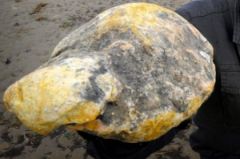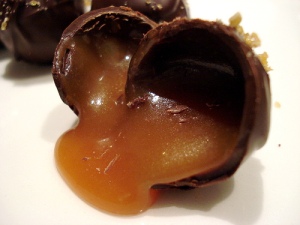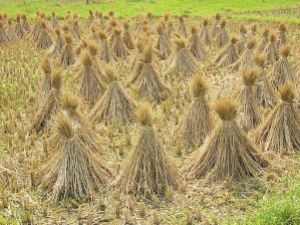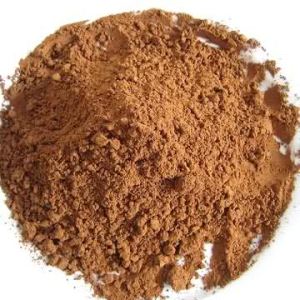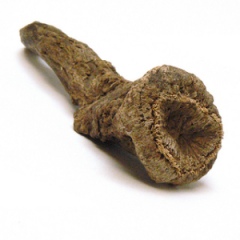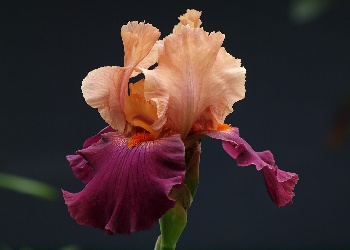One of the most prized, rare, expensive, luxury ingredients in perfumery is ambergris. True ambergris is hard to find nowadays, especially in any large quantity, but it is a scent adds incredible depth and body to a fragrance. It is also nothing like “amber” which usually comes from a combination of plant-based resins and/or synthetics. In contrast, ambergris comes, in an over-simplified nutshell, from whale vomit and has a unique salty, musky, sweet, almost marshy scent.
The Perfume Shrine has a great analysis of the difference between “amber” and ambergris which also helps explain the reason for the rather sweet character of most of the “amber” fragrances on the market. The explanation for the rather unique, special smell of ambergris (sometimes known as grey amber) is as follows:
It’s hard not to fall in love with ambergris … [which] smells, depending on the piece and whom you’re talking to, like musk, violets, fresh-hewn wood, tobacco, dirt, Brazil nut, fern-copse, damp woods, new-mown hay, seaweed in the sun, the wood of old churches, or pretty much any other sweet-but-earthy scent”. [Kemp Chris., Floating Gold: A Natural (and Unnatural) History of Ambergris]
The ingredient is rather sticky and gelatinous like, like a fat lump of grey color at first; while when it dries it becomes harder like a fragile but hard resin. […] [After some years, it] gains a beautiful patina that famously chemist Gunther Ohloff described as “humid, earthy, fecal, marine, algoid, tobacco-like, sandalwood-like, sweet, animal, musky and radiant”. Other people have dscribed it as having the scent of wood in old churches or Brazil nuts.
[¶] Its greatest attribute is its capacity for rendering a composition rounder, especially in oriental perfumes or in floral compositions where it melds the notes into one and brings out their best qualities. It clings on to fabric too, through repeated washings even, becoming ever sweeter with time. Therefore it is prized for its fixative power: the ability to anchor more volatile notes and make them last. [¶] Most commercial perfumes today use a synthetic substitute, because the real thing is so expensive.
The reason for this long discussion of ambergris — synthetic or natural — is because its aroma is the heart and soul of Ambra Aurea, a luxurious, deep, beautiful, amber eau de parfum from Profumum Roma (sometimes called just “Profumum” or “Profvmvm,” but also written as “Pro Fvmvm” on the company’s website).
The Italian niche house is based in Rome and was founded by four siblings in 1996, but its history goes back to right after the end of WWII. The founders’ artisanal grandparents, Celestino and Lucia Durante, left the tiny Italian village of Sant’ Elena Sannita for Rome where they opened a tiny storefront, which over time grew into a chain of stores, featuring hand-made soaps, fragrances and beauty products. Their grandchildren decided in 1996 to start a line of exclusive fragrances which, as Luckyscent explains, were “crafted to evoke emotions, memories and a sense of their beloved Italy. These rich and layered fragrances are designed to work equally well on men and women, and, amazingly, they really do.”
 I’d heard a lot about Profumum’s fragrances, especially Ambra Aurea which many consider to be one of the best amber perfumes around. And, you know, it’s pretty damn good! Profumum‘s website describes it very simply:
I’d heard a lot about Profumum’s fragrances, especially Ambra Aurea which many consider to be one of the best amber perfumes around. And, you know, it’s pretty damn good! Profumum‘s website describes it very simply:
Scent of antique temptations:
scent of pleasure and warmth.Grey amber, Incense, Myrrh
Ambra Aurea opens on my skin with a stunningly rich aroma that is simultaneously: salty, sweet, sticky, extremely nutty, slightly musky, beautifully golden and honeyed. It radiates smooth warmth, like a bath of salty caramel. It really smells of genuine ambergris, even though Ambra Aurea must surely use a synthetic version given the exorbitant cost of the real thing. But, honestly, wow! The beautiful depth of real ambergris is all here with its musky, salty, almost marshy, gooey, minutely sweaty feel. In fact, there is actually something a little vegetal in the undertones to the perfume that is hard to explain, yet very much feels like the real thing. But, while real ambergris can sometimes be a bit too raw, rough, and untamed, here, the edges are smooth as silk, layered with rich honey, and supplemented by other elements. For example, labdanum. There has to be a large dose of labdanum in the base with its nutty, subtly leathered feel, to go along with all the beautiful smoke from the myrrh that wafts delicately in the background.
Ambra Aurea’s stunning, gorgeous, luxurious opening consistently brings two things to mind: caramel and candlelight. The perfume feels exactly like the darkest, goo-iest, richest caramel, the sort which oozes from the middle of an extremely expensive piece of chocolate. If you’ve ever bitten into a Maison du Chocolat, Teuscher or Godiva chocolate, you’ll know what I’m talking about: that thin, but incredibly rich, flow of brown caramel. At the same time, Ambra Aurea feels so golden, it’s like a room lit only by candles. There is a warm glow to the scent in its opening stage which just radiates coziness. I would wear this non-stop and, in truth, I couldn’t stop sniffing my arm. The real clincher for me is the ambergris feel with its salty notes. It’s absolutely nothing like the smell in most “amber” fragrances that one encounters with their labdanum-vanilla-benzoin bases. Ambra Aurea’s note isn’t hugely sweet, but more like salted, earthy, musky, almost wet, humid amber atop layers of deep, dark honey and nutty resins.
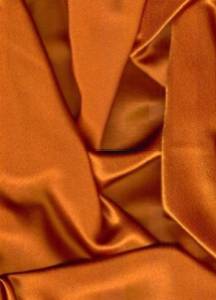 The most fascinating, appealing aspect to the whole thing may be its smoothness. It truly feels like silk or, better yet, satin. There is a heavenly undulating smoothness that flows like a gentle wave in an incredibly sexy, sensuous manner. And, while the perfume is incredibly potent in those early moments, it never feels leaden or resinously thick. It’s not an airy, light scent by any means, but the weight of the perfume is absolutely perfect for such rich notes. It is truly what I had expected Tom Ford‘s Amber Absolute to be like, but which ultimately wasn’t.
The most fascinating, appealing aspect to the whole thing may be its smoothness. It truly feels like silk or, better yet, satin. There is a heavenly undulating smoothness that flows like a gentle wave in an incredibly sexy, sensuous manner. And, while the perfume is incredibly potent in those early moments, it never feels leaden or resinously thick. It’s not an airy, light scent by any means, but the weight of the perfume is absolutely perfect for such rich notes. It is truly what I had expected Tom Ford‘s Amber Absolute to be like, but which ultimately wasn’t.
Ten minutes in, Ambra Aurea shifts a little. The honey note becomes even richer but also takes on an undertone of beeswax. The musky element and the subtle smokiness also become more prominent, lessening and cutting through some of the feel of caramel-like nuttiness. God, it’s a beautiful amber scent. Unfortunately for me, a lot of that ambergris richness and honey element starts to recede, replaced by a heavy dose of labdanum. While I love labdanum, no-one can say it’s quite as unique, rare or special a note as compared to ambergris. Making it even less attractive to me here is the fact that the note has a strong undertone of “cherry Cola” at the start of the second hour. Personally, I prefer it when labdanum has a more honeyed, nutty, faintly leathery nuance. That said, Ambra Aurea is still very pretty. The labdanum has a light dusting of incense and a creamy amber finish that feels lightly infused with a custardy vanilla. In some odd way, the combination makes me think a little of “Tauerade,” the drydown base to many of Andy Tauer’s perfumes. The difference here is the ambergris note in the background with its musky, salty feel.
For the next ten hours (yes, ten!), Ambra Aurea remains primarily as a labdanum-amber-incense perfume with fluctuating levels of each element. The labdanum eventually loses much of its “Cherry Cola” nuance, the ambergris remains as a light component infused with saltiness and light incense, there are strong elements of beeswax lurking in the background, and the whole thing sits atop a generalized amber base that has a subtle vanillic element to it. By the thirteenth hour (!), Ambra Aurea is nothing more than a vague, generalized, musky ambery perfume with a faint suggestion of smoke and saltiness.
If your eyes are popping open at those longevity numbers on my voracious, perfume-consuming skin, you’re not alone. Ambra Aurea lasted at least 13 hours on my skin! In truth, I think I detected faint remnants of the perfume flickering here and there in small pockets around the 16th hour. It’s mind-boggling to me, especially as I did not apply very much at all. Which brings me to the sillage. Ambra Aurea is not a perfume with the sort of monstrous projection that emanates in tidal waves across a room. For the first thirty minutes, the projection was expansive but, after one hour, it dropped quite a bit to emanate only 2-3 inches above the skin. Yet, within its own little pocket, it is very noticeable and powerful. I think it became a skin scent only about 6.5 hours into its development, but you still didn’t need to inhale at your arm to detect it. I suspect all of these numbers would be massively higher if I not only applied a greater quantity but if I did so via a spray bottle. Aerosolization always adds far greater potency to a perfume than mere dabbing from a vial. And, God, what I would give to spray on a lot of Ambra Aurea for its opening stage! What an amber!
Ambra Aurea is intentionally and expressly intended to be an amber soliflore — meaning a perfume centered around one main note — so it is obviously going to be very linear and uncomplicated in nature. I frequently say that “linear” is a bad word only if you hate the scent in question. And I most definitely did not hate Amber Aurea. Nonetheless, I thought the opening phase was significantly better than its subsequent, less interesting, less special change into a predominantly labdanum-based amber. If the opening hour had remained for most of Ambra Aurea’s development, I would be contemplating how to buy a bottle right now. The notes were so sumptuously smooth, so satin-y rich and layered, I was in absolute heaven and I truly thought Ambra Aurea would become my go-to amber, cozy fragrance. I could just see myself after a long day, after a hot bath, spraying on the perfume and curling up for a cozy evening. The beauty of that start, its cocoon-like warmth, and the extent to which it was comforting, soothing, and relaxing… I can’t begin to convey it properly. But, to me, it didn’t remain that way and, while the subsequent development of the perfume was perfectly lovely and pretty, I’m not convinced that it’s special enough for the perfume’s price.
Which brings me to perhaps one of the biggest problems with not only Ambra Aurea, but with Profumum’s fragrances in general: cost. The perfume is only available in a large 3.4 oz/100 ml bottle that costs $240 or €179 (with some European vendors selling it for more). It’s a little steep for a perfume that is a linear soliflore whose second act doesn’t quite match its first one. If Ambra Aurea came in a smaller size, I think it would be much harder to resist but, as it is, I’m still weighing the pros and cons. I’m not the only one having problems with the cost issue. It’s a subject that is frequently and commonly raised when it comes to both Ambra Aurea and Profumum as a whole, though some seem to think it’s wholly justified. On Basenotes (where Ambra Aurea has a 100% positive rating from 8 reviews), I read a very interesting claim by a commentator, “sultan pasha,” who wrote, in part:
After Profumi Del Forte’s Ambra Mediterrana this has to be one of the greatest and most sublime and richest Ambergris driven amber fragrance I’ve ever smelt. A lot a of people complain about the price, but I’ve heard on good authority that Ambra Aurea is stronger than most normal perfume extraits. For the $240 you are getting 100ml of parfum with a staggering concentration of 46% which is higher than most extraits available in the market! So stop complaining and buy a bottle!
I have no idea where he got the 46% concentration number or if it’s true. I’ve found nothing on any site elsewhere to support that fact which, if true, would be utterly astounding and the highest thing I’ve ever seen. I did some investigation, and the only thing I can find to corroborate that number is a French perfume retailer called Soleil d’Or whose online purchase page for Ambra Aurea states: “Perfume very highly concentrated (43%).”
Outside of genuine curiosity at such a high number, I don’t ultimately care about the technicalities and, in truth, I actually wouldn’t be surprised if Ambra Aurea’s concentration were that insanely high. It smells like it! As “Sultan pasha” wrote in the rest of his review, this is a perfume where one spray will last overnight, and he’s probably right that it would last over a week on clothing. Ambra Aurea has spectacular longevity and its concentrated dosage certainly may warrant its high price. (On the other hand, that concentration would make a smaller bottle even more practical; a 100 ml of such potent juice may well last a person for the next 80 years!) At the end of the day, however, cost is wholly subjective, so I think people who love rich orientals or ambers with smoke absolutely should try Ambra Aurea — for a sniff at the very least. It’s shamefully under-appreciated and unknown.
There aren’t a lot of in-depth reviews for the perfume out there, probably because it isn’t a very complicated scent at the end of the day, but a few assessments from Basenotes may help you decide, especially in terms of comparisons to other amber fragrances out there like Serge Lutens‘ Ambre Sultan:
- A dark, resinous, warm and sensual amber fragrance, probably one of my favourites because of its deep and obscure character, softened by some saline and rounding facets – surely due to its high percentage of ambergris that gives this fragrance its wonderful identity. As all other Profvmvm fragrances, its quite oily texture add a long-lasting but close-to-skin quality at the same time. Really addictive!
- Ambra Aurea is a top of the line Amber along with Amber Sultan. However, I am not a fan of the sharp stink factor of really raw Amber. I love the other aspects of both of these, but what they were competing against in my samples was Fiore d’Ambra by Profumum Roma. To me, Fiore d’Ambra is the most heavenly, well balanced, and intoxicating Amber. Ambra Aurea is a little darker, mellower, with a touch of sharp Amber stank, while Fiore d’Ambra is refined enough to take the edge off, introduce a slight spice floral with a mere suggestion of powderiness and let the warm vanilla laced amber soar in majestic opulence. Ambra Aurea by contrast stays more grounded and less high flying. With quality this high between these 3, it really comes down to personal preference. […] In summary, this is one of the best Ambers ever, but it just isn’t as incredible as its sister.
- First of all, l do not think this is at all similar to Ambre Sultan; the Sultan is much more herbal & medicinal than this one. This fragrance is most similar to Tom Ford’s Amber Absolute, & along with that one, it is one of the very best ambers that l’ve tried. l also find it much more satisfying than its’ sister fragrance, Fiore d’Ambra. This has the “wow” factor for me; a strong, raw, resinous amber that smells like it just dripped out of a pine tree. After 30 minutes it sweetens to a deep, rich, velvety amber that is not at all powdery. The sillage is great & the longevity even better. lf you’re looking for a raw amber fragrance with lots of depth that’s not TOO sweet, this one is definitely worth a try.
I haven’t tried Fiore since Ambra Aurea is my very first Profumum fragrance, but Patty at The Perfume Posse has a brief line about it in an Amber round-up. [UPDATE: here’s my Fiore d’Ambra review.] In the sub-category “The Mongol Hordes are Coming” (which is hilarious), she writes:
Profumum has two fairly fierce ambers – Fiore d’Ambre and Ambra Aurea. You would have to go a long ways to find two ambers from one line that are quite good, and Profumum has done that. Fiore is warmer. Aurea is a little sweeter on the open, more honeyed. If it weren’t for my annoyance with Profumum’s huge price tag with perfumes in such plain bottles, I’d be a huge fan. I am a huge fan of these two and several of their perfumes, but I get stuck on thinking their price point is just not right.
As you see, we’re back to the price issue, but I agree with her. At a lower price point, I wouldn’t hesitate to buy Ambra Aurea, uncomplicated and simple though it may be. All I can do is to urge the rest of you to try it and see for yourself. Now, if you’ll excuse me, I have to go figure out how to get my hands on a decant of the perfume. It’s that good!

